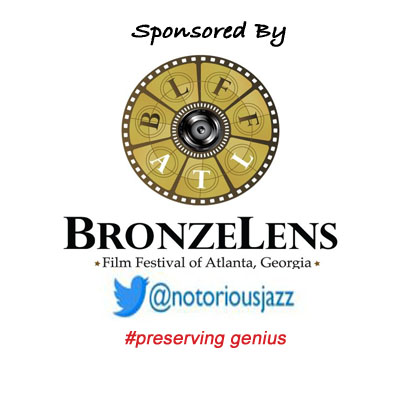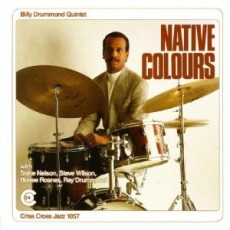
Daily Dose Of Jazz…
Jazz drummer Billy Drummond was born Willis Robert Drummond, Jr. on June 19, 1959 in Newport News, Virginia. From an early age he learned jazz from his father, who was also a drummer and a jazz enthusiast and whose record collection included many recordings of Miles Davis, Art Blakey, Max Roach, Buddy Rich and Elvin Jones, among others.
Billy played in bands from age eight and studied at Shenandoah Conservatory. At the behest of Al Foster he moved to New York in 1986 and shortly thereafter joined the Blue Note band, Out of the Blue (OTB) with whom he recorded their last CD. He subsequently joined the Horace Silver sextet and toured extensively.
Drummond has played and recorded with Nat Adderley, Ralph Moore, Buster Williams, Charles Tolliver, Lew Tabackin and Toshiko Akiyoshi, Hank Jones, James Moody, Sonny Rollins, Andy LaVerne, Lee Konitz, Larry Willis, Toots Thielemans and Freddie Hubbard among others greats.
Billy’s influences include a long list besides Tony Williams, Max Roach, Philly Joe Jones, Al Foster, Jack DeJohnette and Billy Hart. His discography includes three albums as a leader, another five as a co-leader, fifteen as a band member with Carla Bley and Steve Kuhn, and sixty-six as a sideman.
He is currently a long-time member of Carla Bley’s Lost Chords Quartet, leads the New York-based band “Freedom of Ideas” in addition to touring, and is Professor of Jazz Drums at the Juilliard School of Music and New York University in New York.
More Posts: drums
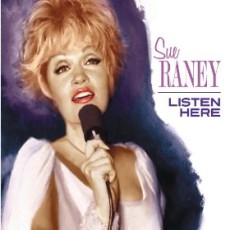
Daily Dose Of Jazz…
Sue Raney was born on June 18, 1940 in McPherson, Kansas. The proverbial fruit did not fall far from the tree as her mother was a singer and a great, great aunt had been a performer in German opera. She started singing at age four and a year later was performing in public. Due to her young age no voice teacher could be engaged, mother took voice lessons herself and then passed down what she learned to Sue.
A professional before she was a teenager, Raney worked steadily in New Mexico when her family relocated and took several trips out to Los Angeles during a couple of summer vacations. She joined the Jack Carson radio show in 1954 in L.A. when she was barely 14. By age 17 was signed by Capitol Records to record her debut album, the Nelson Riddle-produced When Your Lover Has Gone, released in 1958.
Sue then appeared on Ray Anthony’s television program and became his band’s main vocalist. At 18 she started working as a single. She had already recorded for Phillips and then signed with Capitol, recording several middle-of-the-road jazz-influenced pop dates including her 1958 Nelson riddle-produced debut album “When Your Love Has Gone”.
In the 1960’s Raney often appeared on television variety shows, led her own group and became very active in the studios where her impressive voice helped sell products. After a hiatus in the 1970s, the jazz vocalist continued to record sporadically and by the early 1980’s, in addition to recording several jazz albums for Discovery Records, she began working as a voice teacher. Through the Nineties and into the new millennium she sang with the L.A. Voices, Supersax, the Bill Watrous Big Band and as a soloist, releasing “Heart’s Desire”, a 2006 tribute album to Doris Day and in 2011“Listen Here: Alone With Alan Broadbent”.
Over the course of fifty years vocalist Sue Raney has recorded twenty albums, performed music ranging from swinging jazz and ballads to cabaret, middle-of-the-road pop and jingles, and has remained active as a jazz educator and in the studios.
More Posts: vocal
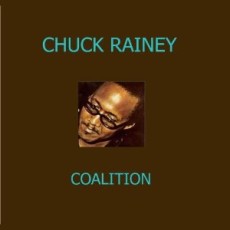
Daily Dose Of Jazz…
Chuck Rainey was born Charles Walter Rainey III on June 17, 1940 in Cleveland, Ohio. His youthful pursuits included violin, piano and trumpet but switched to baritone horn in order to join the Lane College traveling ensemble while matriculating. But it was while on active military duty that he learned the rhythm guitar, however, his lack of improvisational skills led him to pick up the bass. He soon found steady work as a studio bassist in New York, recording and touring with many of the greats of the time.
Through the 1970s he played with Jerome Richardson, Grady Tate, Mose Allison, Gato Barbieri, Gene Ammons and Eddie Vinson. He was a member of the King Curtis All Stars, toured with the Beatles second U.S. run and had firmly established himself as New York City’s “first call” session bass guitarist.
In 1972, he released his first solo album “The Chuck Rainey Coalition” consisting of notable session musicians Richard Tee, Warren Smith, Specs Powell, Eric Gale, Bernard Purdie, Herb Lovelle, Cornell Dupree and Billy Butler. He moved to Los Angeles that same year working with Quincy Jones and his big band but continued as a studio musician playing for Betty Davis, Steely Dan and Aretha Franklin.
Rainey’s style has always been to provide a rhythmic and melodic bottom that works with the drummer for the benefit of the song. His books on bass study refer to ”sensitivity to music” and a dedication to studying the fundamentals of music theory. While his “sideman” philosophy of bass has not brought him the level of recognition of star players such as Jaco Pastorious, Rainey is by far more recorded than his more famous contemporaries.
More Posts: bass
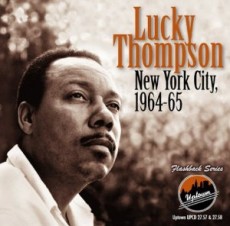
Daily Dose Of Jazz…
Lucky Thompson was born Eli Thompson on June 16, 1924 in Columbia, South Carolina but the family moved to Detroit, Michigan during his childhood. Raising his siblings after his mother died, he practiced his saxophone fingerings daily on a broomstick prior to acquiring his first instrument. After graduating from high school in 1942 he joined the Erskine Hawkins band.
Lucky went on to play with the swing orchestras of Lionel Hampton, Don Redman, Billy Eckstine, Lucky Millinder and Count Basie, he worked in rhythm and blues, later establishing a career in bop and hard bop working with Kenny Clarke, Miles Davis, Dizzy Gillespie and Milt Jackson.
An inspired soloist playing in a more advanced bebop format in the early 60s and capable of a very personal style in which the tradition of Coleman Hawkins, Ben Webster and Don Byas was intelligently mixed with a modern grasp of harmony. He showed these capabilities as sideman on many albums recorded during the mid-1950s, such as Stan Kenton’s Cuban Fire and those under his own name.
He appeared on Charlie Parker’s Los Angeles Dial Records sessions and on Miles Davis’s hard bop Walkin’ session. Thompson recorded albums as a leader for ABC Paramount, Prestige and as a sideman on records for Savoy with Milt Jackson as leader.
In the late 60’s Thompson lived in Lausanne, Switzerland and recorded several albums there including A Lucky Songbook in Europe. He taught at Dartmouth College in 1973 and 1974, and then left the music business completely, because of the racist treatment he received from record companies and clubs.
In his last years he lived in the Pacific Northwest suffering from Alzheimer’s disease and on July 30, 2005, hard bop saxophonist Lucky Thompson passed away in Seattle, Washington.
More Posts: saxophone

From Broadway To 52nd Street
On The Town opened at the Adelphi Theatre on December 28, 1944 and ran for 463 performances. Leonard Bernstein composed the music and Betty Comden and Adolph Green wrote the lyrics. The musical starred Betty Comden, Nancy Walker, Adolph Green, John Battles, S. Ono Osata and Chris Alexander.
The Story: Three sailors – romantic Gaby, down-to-earth Chip and clownish Ozzie are on shore leave in New York City. During a subway ride, Gaby falls in love with a picture of Miss Turnstiles. This event leads the guys on an adventure to find her. Roaming around the city as far as the museum of Natural History and Coney Island, the other two also find love. Nancy Walker plays the cab driver. From this play New York, New York and Some Other Time became jazz standards.
Jazz History: American involvement in World War II, which began on December 11th, 1941 marked a decline in the importance of big bands in popular music. Many musicians were sent to fight in the war, and those who remained were restricted by high taxes on gasoline. By the time the ban on recording was lifted, big bands had practically been forgotten, or had begun to be thought of as peripheral in relation to vocal stars such as Frank Sinatra.
The fall of the Big Band began on August 1, 1942 when the American Federation of Musicians initiated a strike against all major recording companies because of a disagreement over royalty payments. No union musician could record. The effects of the strike include the shrouding of the developments of bebop in mystery. There are few documents that can provide evidence of what the early forms of the music sounded like.
Sponsored By
www.whatissuitetabu.com


